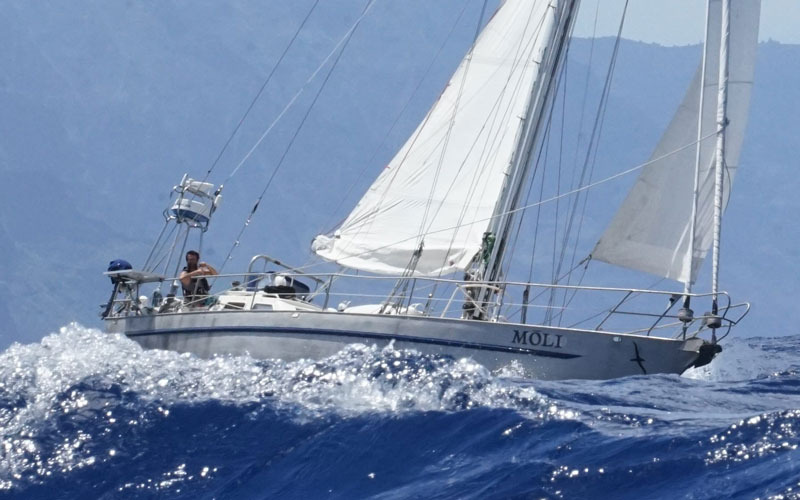
Sailboats Rule the Northwest Passage
The New York Times recently reported that as ice continues to subside in the Arctic, cargo companies are considering using the Northwest Passage, "potentially a faster, more direct route between Asia and ports in Europe and eastern North America," according to the Times — as a regular shipping route in the next few decades.
But let’s not forget that sailors both pioneered the Northwest Passage and have been cruising it for decades. In fact, we’re pretty sure more sailors have done the Passage (some even in fiberglass boats) than mega-container ships or icebreakers.
The Northwest Passage was first navigated successfully by Norwegian Roald Amundsen, after several famed and failed expeditions. With a crew of six, Amundsen’s 70-ft gaff-rigged sloop Gjøa made it through the Passage in 1906 — a three-year voyage. The Gjøa did have a small engine, as the Northwest Passage is just as famous for its summer calms as it is for its ice.
In 1977, Willy de Roos became the first person to skipper a yacht — the 45-ft steel ketch Williwaw — through the Passage. Matt Rutherford navigated the Northwest Passage in a 27-ft Albin Vega, then went around Cape Horn and back to Annapolis in his Solo Around the Americas Challenge in 2011.
In the fall, local San Francisco sailor Randall Reeves — featured in Latitude 38’s May issue’s Sightings — plans to attempt the Figure 8 Voyage from the Bay Area to Cape Horn, around Antarctica, up the East Coast to Greenland, through the Northwest Passage, and back to the Bay.

In 2014, Reeves crewed with a couple who had attempted and failed to navigate the Passage the year before in their 45-ft Bruce Roberts-designed steel sailboat. The Roberts became one of seven boats that made the complete passage in 2014. "Thirty boats gave it a shot," Reeves said. "That’s a lot. But only seven made it."
The behavior of the ice in the Northwest Passage varies from year to year. It is (almost) universally agreed that ice in the Arctic is melting rapidly. "Scientists say global warming is largely responsible for the changes. Parts of the Arctic are warming twice as fast as elsewhere," according to the Times. But the melt doesn’t equate to a more navigable route.
Reeves said that while there’s less ice in the Arctic, it doesn’t mean there’s less ice in the Passage itself. "It’s not necessarily easier every year," Reeves said. "It’s not linear." The erratic nature of the ice is one of many reasons that the Northwest Passage is not yet ready for full-time shipping.
"Just because shippers could make greater use of Arctic routes does not mean they will," the Times said. "Ice conditions will still vary greatly from year to year, which would discourage shipping companies for which precise timing of shipments is crucial."
And making the Northwest Passage is not easy or a barrel of laughs. "It’s not a fun passage," Reeves added. "It’s a lot of work, and it’s really cold and stressful; you can get 2,000 miles in and have to over-winter, because you can’t get out."
